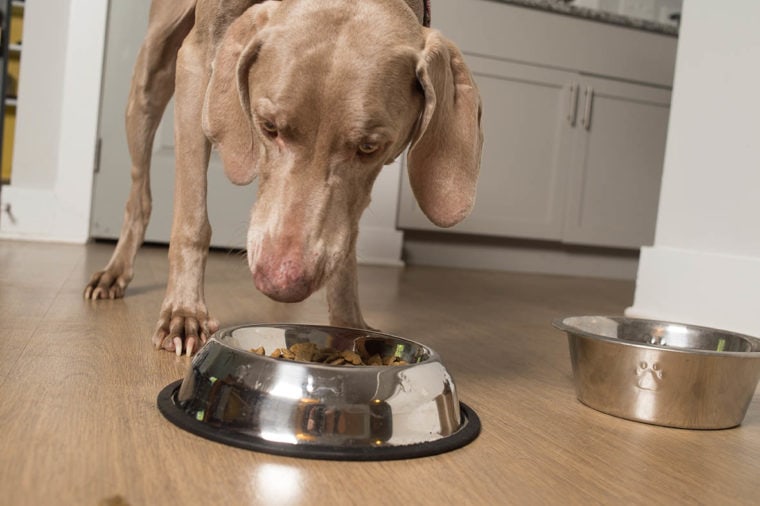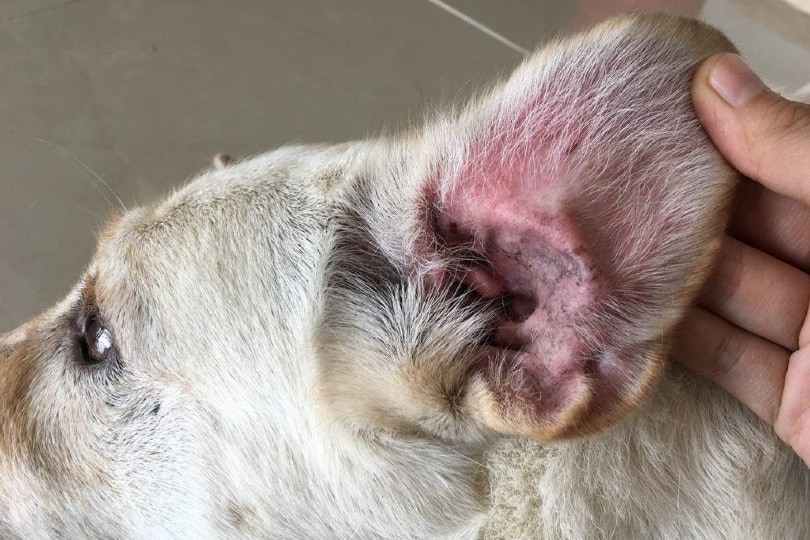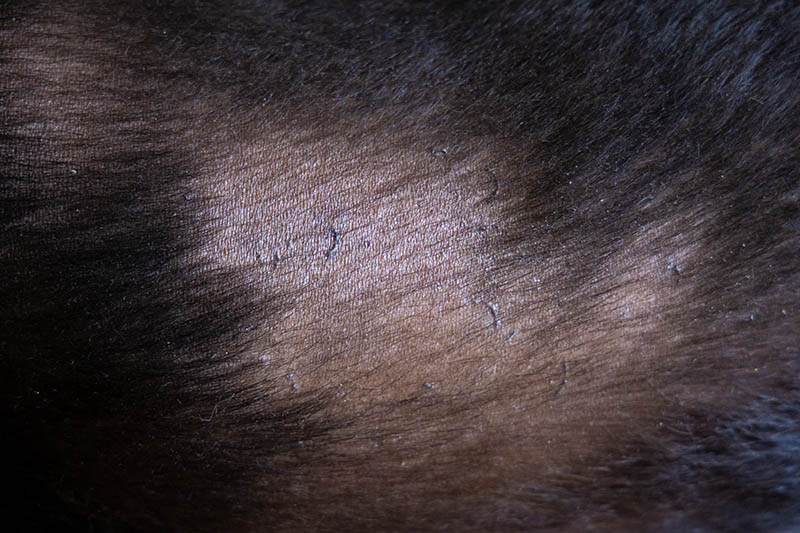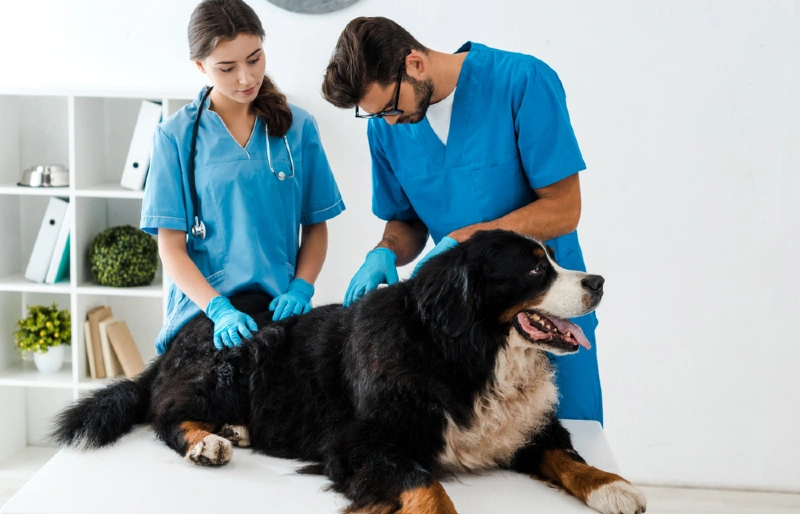
Food allergies are not as frequent in dogs as is commonly thought. Estimates vary but less than 5% of dogs are thought to have genuine food allergies. If your pup is exhibiting strange signs suddenly, it could be that they have developed an allergy or intolerance to their food? Food allergy causes immune response, while a food intolerance is a chemical reaction in the digestive tract.
Unfortunately, there is no easy way to find out what your pup is allergic to, so determining what’s causing the issue can be a lengthy process. However, if you’re curious if your pup’s signs are related to their diet, we can help shed some light for you.
Keep reading to learn how to tell if your pup is allergic to their food and what to do if you suspect food allergies are afoot.
The 5 Signs of Food Allergies in Dogs
There are several signs your pup may exhibit if they are dealing with food allergies.
It’s important to note that many of the signs associated with food allergies can also be related to other issues like environmental or flea bite allergies. In the case of environmental allergies, however, they’re most often seasonal, at least to start with. You can rule out other reasons for your dog’s discomfort by keeping track of signs to see if they ebb and flow with the changing seasons.
1. Chronic Itchiness
Itchiness, also known as allergic dermatitis, is one of the most common signs that your pet is facing an allergy. Itchy skin can happen anywhere on your dog’s body, but the most common places you’ll see your pup scratching include their ears, paws, rear end, and stomach.
Depending on the severity of the itchiness, you may see your dog scratching, licking, and biting the affected areas. This can cause broken skin, eventually leading to infections that need veterinary intervention.

2. Skin Issues
Skin issues represent the main manifestation of pet food allergies, around 70% to 80%. Skin problems can present as rashes, hives, and hot spots and may make your pup’s skin look oily, dry, scaly, or leathery. You may also notice redness of the skin and ear, and your dog may struggle with constant itching and secondary skin infections.
If your pup has shorter fur, it’s easier to see skin issues. Otherwise, you’ll need to feel around in the fur to find them, though the constant scratching will be obvious.
3. Recurring Ear Infections
Food allergies can cause your pet’s skin barrier to break down and result in alterations to the microbiome’s environment. This means the normal levels of yeast and bacteria in the ear will become imbalanced, enabling certain strains to overproduce and take over the delicate tissues. This will ultimately lead to inflammation, pain, and ear discharge.
Unfortunately, if ear infections become chronic, they can cause your dog’s ear canal tissues to scar and change their normal shape, resulting in shrinkage of the canal opening. This can make treatment even more challenging because the medication required to fix the infection will have difficulty reaching the deeper parts of your pup’s ear canal.

4. Gastrointestinal Issues
Your pup’s food allergy can cause digestive disturbances like vomiting, gas, or diarrhea, all of which can lead to weight loss and lack of energy. Your pup may also exhibit signs of abdominal pain and low appetite.
5. Behavioral Changes
Although it’s rare, you may recognize some emotional or behavioral changes in your dog in response to their food allergies. This can include restlessness, withdrawal, loss of interest in food or activities, hyperactivity, or even aggression.

What Is a Food Allergy?
An allergy is when the immune system of a dog with allergies overreacts and produces antibodies against non-pathogenic, food-specific proteins. When dogs are allergic to their food, antibodies are produced against specific ingredients of the food, typically animal-derived proteins or in rare cases, wheat. Since antibody production is necessary to develop an allergic reaction, food allergies occur after exposure to a particular food.

What Are Some of the Common Food Allergies?
Common food allergens in dogs include:
What Do I Do If I Suspect My Pup Has Food Allergies?
Finding the specific ingredient that your dog is allergic to can be challenging but not impossible. One way to determine your pup’s allergy is to begin an elimination diet. This requires you to eliminate the proteins that your dog has been exposed to over the course of 2 or 3 months. You’ll need to feed them a limited-ingredient novel protein diet. While this can feel like quite the undertaking, it’s necessary to enable the inflammation caused by the old protein sources to be cleared from your dog’s body so you can determine what was causing the issues.
Your veterinarian can provide more advice for beginning an elimination diet.

What Happens When the Allergen Is Identified?
Once you know what the allergen is, you’ll need to begin feeding your dog a diet that doesn’t contain it. Thankfully, there are several hypoallergenic diets available that your veterinarian can recommend. But unfortunately, you will never again be able to give your dog food that contains the triggering ingredient for the rest of their life.
The three types of hypoallergenic diets include:
Food Allergies vs. Food Intolerances
If your dog suffers gastrointestinal distress when fed certain foods but there isn’t a systemic immune reaction, this is a food intolerance. It means your dog is unable to process and digest a certain ingredient. Remember:

Final Thoughts
If you suspect your dog is allergic to some component of their food, we highly recommend an appointment with your vet to see the best course of action. Once you know what your pup is allergic to, you must make a long-term commitment to stick to the treatment plan. Though the process of identifying the allergen can be long and arduous, it’s more than worth it to ensure your pup stays happy and healthy.
Featured Image Credit: Laura Beach, Shutterstock






